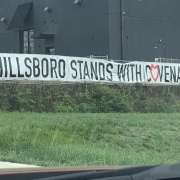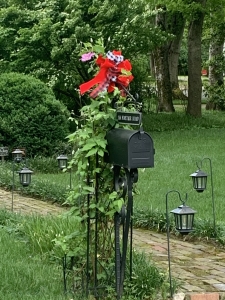Hello, Gorgeous.
So you’re back, are you? Yes, here you are, in all your tempting ruby glory. I can’t get enough of you, and I don’t care who knows it.
There are those who may say (sing it, Andy Williams) that the year-end holidays are the most wonderful time of the year.
Perhaps that’s true, but right here, right now, record one vote in that category for Strawberry Season.
These red crown jewels of cuisine, the tiny ripe ones sweet enough to make you weep on first bite if you weren’t too busy reaching for another—they come from right up the road this time of year, if you are lucky enough to live in the right places. In our neck of the woods, the Strawberry Epicenter is Portland, Tennessee, and on farms stretching out and around the rolling hills of north-central Volunteer State.
Why Portland? The definitive local source is silent on and agricultural/scientific bases for the local strawberry boon. According to the website for Portland’s annual strawberry extravaganza, “in the early 1900’s Portland’s big industry was ‘strawberries’. In addition to the large number of farms and agricultural businesses growing the country’s finest berries, there was a creating factory, a fruit processing plant, a canning factory, and a freezing facility producing strawberries for Breyers Ice Cream and other national brands.
It continues: “During the peak of the strawberry business Portland would ship out 30 railroad cars a day. Portland started hosting the Middle Tennessee Strawberry Festival in 1941…Each year in mid-May the festival brings 40,000-plus people together to celebrate the importance of the strawberry industry to Portland’s heritage.”
Thirty freight cars a day? That’s a train worth hopping, like the hoboes of old in search of better times and places. That “country’s finest berries” part just might reflect regional bias; who knows? Google reports, as Google tends to do, a maddening variety of conflicting answers on where to find the best strawberries in the U.S. Here’s our answer to Google’s eternal indecision: The best strawberries are the ones that are grown right up the road, wherever you may be.
Meanwhile, if you have even one eye open, you cannot miss the arrival of the Most Wonderful Time. Like a royal coronation or the Super Bowl, it is heralded with street banners, celebrations, and featured recipes in every possible media outlet.
The most authentic fans wait patiently for the arrival of the local gems in glorious early summer, disdaining the hard and flavorless imposters that perch in other seasons in the produce section coolers at any grocery store. Too large, off-color, or, worst of all, hollow inside (shuddering is the appropriate response here), these are easy to ignore, for they are the poorest imaginable substitutes for the true, local, delectable thing.
Strawberries are tasty testimony to the eternal truth that small is so often superior. The very best of these scarlet prizes are small, blood-red, no orange tones. They are firm, not too hard (underripe), and not too soft (overripe). We the faithful (read: picky) scan container arrays at farmers markets and in neighborhood produce shops, scrupulous in selection. We are indifferent to how long this examination requires, and we pity those who don’t understand it’s importance.
At this height of the Blessed Season, the chefs of YouTube, the Food Network, and beyond present us with countless recipes to feature our treasures during this brief annual spectacle. There they perch atop a salad, snuggling amidst Southern pecans and local goat cheese. And here they are swimming in a cocktail, the scarlet tones drawing the eye like hummingbirds to red geraniums. My, they photograph well. A favorite local restaurant, Nashville’s fabulous Midtown Cafe, added strawberry cake to the dessert menu, its lovely pink cream icing proudly holding up the fresh, naked trophies atop each slice. It is enough to haunt your dreams. I awake wondering how I can finagle a return visit before the season ends. One must have one’s cake and…well, you know what I mean.
About those recipes.
 Admire them as you may, but there is a great secret among the most indefatigable of the Strawberry Tribe. We never make it through those recipes. Because we are bound to the only recipe that matters: Pop in mouth immediately. Follow with another. Continue with as many as possible, before the Blessed Season ends, all too soon.
Admire them as you may, but there is a great secret among the most indefatigable of the Strawberry Tribe. We never make it through those recipes. Because we are bound to the only recipe that matters: Pop in mouth immediately. Follow with another. Continue with as many as possible, before the Blessed Season ends, all too soon.









